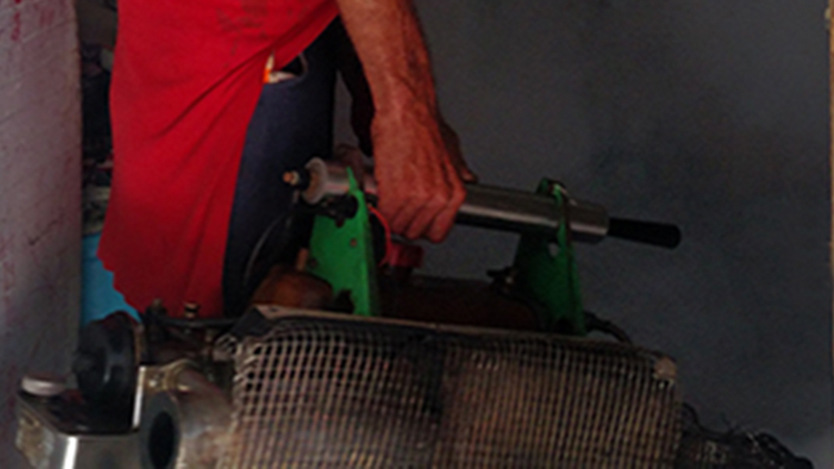
Until the end of statistical week 31, Ciego de Ávila had reported 508 patients with symptoms suggestive of dengue and a reactivity (positive to the IgM test) close to 50 percent. They are provincial data; municipalities within the indicators become even more complex.
So much so that, at the technical meeting of the Ministry of Public Health a week ago, it was decided to declare transmission to the territory of Majagua; Ciro Redondo, Morón and Ciego de Ávila are soaking. This is how the highest Avilanian authorities evaluated it this Wednesday, when the member of the Central Committee of the Party and its First Secretary in the province, Liván Izquierdo Alonso, called for updating the confrontation strategies at all levels.
He said it during a meeting with the temporary work group in the main municipality, first, and reiterated it an hour later, before an audience made up of the directors of organizations and entities, officials of the mass organizations, and party and government leaders from the 10 municipalities.
"We are not doing things right and the most irrefutable evidence is that the unions continue to deteriorate," he stressed. The leader commented that mosquito nets might be missing, at a specific moment, but that alternatives must be sought. “In this, popular participation is essential. You may not have a mosquito net, but if on your block they know that there is a sick person in your house, I am sure that someone will lend it to you”.
At the end of week 30, at least seven work centers in the capital city had outbreaks of Aedes aegypti, something considered unacceptable by the authorities of the territory. In this sense, the First Secretary indicated, a political and health movement will be carried out to declare all state entities safe, based on the fulfillment of several indicators related to the fight against dengue and COVID-19.
“What is at stake here is people's lives. The four serotypes of the disease are circulating and serious cases and deaths are being seen at the country level, as a result of the combination of two serotypes. We must intensify the control of vectors and the identification and isolation of the sick”, Governor Tomás Alexis Martín Venegas pointed out.
What happens in the provincial capital?
Both leaders are completely right. Only in the main municipality, the reactivity doubled from June to July. And although the survey is not reaching 100 percent of the population identified as vulnerable ─ vulnerability is established by age indicators, but also by area of residence, focal point (presence of the vector), and infestation index ─ nonspecific febrile syndromes (indicator of the disease until confirmed with IgM SUMA) and admissions are increasing.
Between weeks 27 and 30, in the case of the Ciego de Ávila municipality, febrile syndromes grew 2.3 times, and admissions 4.2. With that speed of transmission and the accumulated infestation index of the five health areas (greater than 0.31) we are at the gates of a transmission.
Some 130 blocks were positive in the current cycle and eight of them are repeat offenders. This last number is another evidence that things are not being done right.
Likewise, environmental problems persist that end up rounding off the danger of the current health situation: drinking water leaks, sewage blockages, clogged gullies, garbage dumps and weeding are a paradise for the mosquito.
That is why Izquierdo Alonso and Martín Venegas insisted on accelerating the actions included in the strategy to combat the vector and the disease, making efficient use of the available resources.
Reinforcement actions for the control of arboviruses are organized from medical care, health and hygiene promotion, and epidemiology.
We list some of them below:
1- Daily screening according to risk stratification and the movement of feverish patients in the health area.
2- Define patients with home admission criteria and guarantee daily follow-up.
3- Immediately, it refers all patients with unfavorable evolution.
4- Strengthen consultations of the Guard Corps.
5- Increase in health promotion and education actions with emphasis on health audiences.
6- Mapping of the focal points at the health area and office level, febrile cases, confirmed cases, infestation index and environmental risks.
7- Intensive focal treatment in a fixed universe in cycles of 22 days.
8- Blocking 100 percent of febrile cases detected in the first 24 hours.
9- Application of decree laws to residents and those responsible for organizations that fail to comply with current health measures and have a focus.
10- Entomo-epidemiological control of international travelers.




